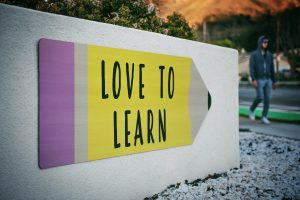on Unsplash
Introduction:
After reading this week’s articles, I chuckled to myself, remembering back to the moment when I was struggling with my UVic email account, needed for our summer courses. I called the UVic Help Desk, where I was informed that if I was a returning student, I could just use my old UVic email address. I laughed, stating that, “when I was a student many years ago, I had no UVic email.” Suddenly the line was silent. The speaker asked how I was able to gain access to the library. I informed them I used the card catalogue system. “The card what?” was their reply. After a brief discussion, and a few laughs, regarding how technology has advanced since I was a UVic student back in the 90’s, I was well on my way. Upon reflection, this incident demonstrated that technology, as a type of media, has grown drastically. It is a tool that has changed how one, including me, can access information, learn new material and find explanations to quandaries. Identifying this fact, made me, recognize how Richard E. Clark’s paper was outdated. Indeed, the access to knowledge has changed since Clark’s publication. The Clark-Kozma media debate focuses on whether different forms of media, such as technology, play a role in assisting in learning. As an educator and a current graduate-student, I argue that, yes, it most certainly can!
My Opinion Around “The Debate”:
I believe the teacher plays an essential role in facilitating in students’ learning, as does, Clark. However, I do not support his argument that “media are mere vehicles that deliver instruction but do not influence student achievement any more than the truck that delivers our groceries” (Clark, P. 22). I recognize there are many challenges and changes that occur while using a variety of media in the classroom to teach material. Nonetheless, there are just as many diverse learners in classrooms, that respond, differently, to types of media depending on their needs, interests and skills. Although Clark would disagree, I believe a “one size fits all” style of teaching does not work, nor is it fair. As educators, it is up to us to provide a wide variety of learning opportunities, methods and experiences to facilitate student learning. By implementing various forms of media in the classroom, teachers can assist in supporting students’ needs, learning processes and their success. Katrin Becker’s article, notes that Clark’s studies and arguments were based on dated material, and in some cases his information was erroneous. I agree with Becker, as she states “[these factors] undermine Clark’s credibility as a qualified critic” (Becker, P. 4) as he argues “[that implementing media in the classroom] has no learning benefits” (Clark, P. 21). Conversely to Clark’s views, I see incorporating various teaching methods and media essential to teaching and facilitating student learning. Educators must consider the diversity of their learners, including their learners’ interests, knowledge and abilities in the classroom. By providing various forms of media, and implementing them into one’s teaching practice, educators can support and enhance students’ learning.
I support Robert Kozma’s argument, in his article, that highlights the necessity to integrate different forms of media in the classroom to engage student learning. His argument, unlike Clarke, suggest that “…learning with media can be thought of as a complementary process …” (Kozma, P. 11), alongside students’ learning processes. Kozma, considers that students learn from a variety of media and methods. Teachers that provide and use different media in the classroom consider the different learning styles of their students’ including visual, auditory and kinesthetic. Thus, educators who implementing media options, such as technology, provide accessibility, opportunities and learning support to suit students’ diverse needs, abilities and skills. Unlike Clark, Kozma recognizes the significance in adopting this style or method of teaching.
The Clark-Kozma debate reaffirmed, with me, that there are so many ways of learning. I support Kozma’s idea, that as educators, we should be asking “In what ways can we use the capabilities of media to influence learning for particular students, tasks and situations?” (Kozma, P. 18). Becker’s article too, suggests that as times have changed, so too has our society; and what we do with the changes in technology and other forms of media that is available to us, is important in how we learn.* In our changing society, it is essential, students are provided with many learning opportunities and exposure to materials that will enhance their educational experience, and develop their skills. Today, teaching and learning, simply, cannot be successful by lecture alone, or by following Clark’s method.
Conclusion:
As I reflect on my school community, I am lucky to work in a school that provides a variety of media to meet our students needs and interests; and therefore, create many learning opportunities. Various forms of media that are available, to enhance students learning, in our school, include: forestry equipment driving simulators, 3-D printer, drones, CNC machine, portable saw mill, pottery wheels, video equipment, treadmills, GPS units, water testing kits, smart boards, computer labs, and a library. These different forms of media are tools in which staff have access to and can use to assist in developing students’ understanding of specific concepts, build upon or develop new skills, and strengthen their educational experience. Seeing the amazing creations that students develop, present, build or report on, with the assistance from a range of media resources available to them, including technology, demonstrates that the provision of media variance is beneficial to students’ learning.
Written By Deirdre Houghton

